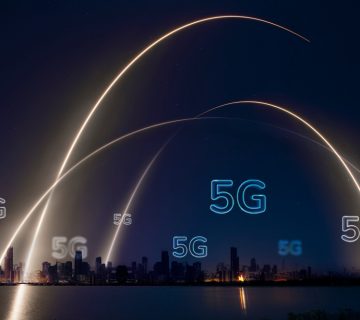Visual Intelligence: The Future of Automated Design Tools
Visual intelligence — the combination of computer vision, machine learning, and generative models — is transforming how design work gets done. Automated design tools are moving beyond templates and presets to understand context, composition, and brand voice, enabling faster, smarter, and more personalized creative outputs. This article explores what visual intelligence means for designers and brands, and how it will reshape creative workflows.
What Is Visual Intelligence?
Visual intelligence refers to systems that can interpret, generate, and manipulate visual content with an understanding of aesthetics, semantics, and user intent. These tools combine image analysis, style transfer, layout generation, and AI-driven suggestions to support creative decisions.
- Computer vision for image understanding and tagging
- Generative models for creating visuals and variations
- Context-aware recommendations for composition and color
Key Capabilities of Automated Design Tools
Modern tools powered by visual intelligence offer a range of features that accelerate creative work while maintaining design quality.
- Auto-layout & responsive design: Generate layouts that adapt to different formats automatically.
- Style matching: Create assets that follow a brand’s visual identity from a few examples.
- Smart asset generation: Produce hero images, icons, and illustrations on demand.
- Image editing at scale: Remove backgrounds, retouch, or restyle photos automatically.
- Variant creation: Generate multiple creative variations for A/B testing and localization.
Benefits for Designers and Teams
Visual intelligence augments human creativity, letting teams focus on strategy and storytelling while machines handle repetitive or time-consuming tasks.
- Speeds up ideation and production cycles
- Reduces repetitive tasks, freeing designers for higher-value work
- Ensures brand consistency across channels and formats
- Enables rapid personalization and localization at scale
Real-World Use Cases
From small agencies to large enterprises, automated design tools are already being used in meaningful ways.
- Marketing teams generating dozens of ad variations tailored to audience segments
- E-commerce brands auto-creating product imagery optimized for each platform
- Design systems that auto-populate components based on content and context
- Content creators using AI to turn concepts into storyboard-ready visuals
Integration into Design Workflows
The most effective adoption blends human oversight with automated capabilities — designers remain in control while AI speeds up experimentation and execution.
- Use AI for rapid mockups, then refine manually for final polish
- Embed visual intelligence into existing tools and design systems
- Establish review checkpoints to ensure quality and brand alignment
Challenges and Ethical Considerations
While promising, visual intelligence raises important questions around copyright, bias, and creative authorship that teams must address responsibly.
- Ensuring proper licensing and attribution for AI-generated assets
- Mitigating style or cultural biases in generated content
- Balancing automation with human creativity to preserve originality
Looking Ahead: The Next Frontier
The future will likely bring deeper collaboration between humans and machines: adaptive interfaces, predictive design assistants, and fully integrated pipelines that translate brand strategy into multi-channel creative ecosystems instantly.
- Predictive design that anticipates creative needs based on campaign goals
- Real-time personalization that tailors visuals per user interaction
- Seamless handoff between AI-generated drafts and human refinements
Final Thoughts
Visual intelligence is not a replacement for designers — it’s a force multiplier. For IdeaDesk and creative teams, embracing these tools means delivering more ideas, faster, while keeping human judgement and brand intent at the center of every creative decision.



